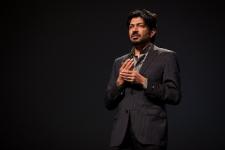Genome Tea Leaves
By Sheldon Krimsky,
Los Angeles Review of Books
| 07. 17. 2016
GENETICS IS INCREASINGLY ENTANGLED with popular culture. Individuals are charting their genetic horoscopes and have been captivated by their genetic roots. Along with our DNA, our genes have become the ultimate “preexisting condition” — which can now allegedly be “read” via ancestry testing, prenatal screening, and medical genome scans. Even forensics has been transformed. In purporting to read what preexists — what is indelible — these gene-reading technologies have also at times been billed as the ultimate prognosticators of everything from health to wealth to likely time of death. The depth of our belief in genes has reached the ears of policy makers, exemplified by the adoption of a recent law forbidding genetic discrimination in health care and the work place. Significantly, this law drew support from across the political spectrum and passed in 2008 by a resounding vote of 414-1 in the House and 95-0 in the Senate.
Two recent books — Siddhartha Mukherjee’s The Gene: An Intimate History and Steven Monroe Lipkin’s The Age of Genomes: Tales from the Front Lines of Genetic Medicine — distill genetic knowledge...
Related Articles
By Megan Molteni and Anil Oza, STAT | 10.07.2025
For two years, a panel of scientific experts, clinicians, and patient advocates had been hammering out ways to increase community engagement in National Institutes of Health-funded science. When they presented their road map to the NIH Director Jay Bhattacharya last...
Paula Amato & Shoukhrat Mitalipov
[OHSU News/Christine Torres Hicks]
On September 30th, a team of 21 scientists from Oregon Health & Science University (OHSU) published a significant paper in Nature Communications, with a scientifically accurate but, to many, somewhat abstruse headline:
Induction of experimental cell division to generate cells with reduced chromosome ploidy
The lead authors were Shoukhrat Mitalipov, recently described here as “a push-the-envelope biologist,” and his long-term colleague Paula Amato. (Recall that in July the pair had co-published with...
By Pam Belluck, The New York Times | 10.17.2025
Before dawn on a March morning, Doug Whitney walked into a medical center 2,000 miles from home, about to transform from a mild-mannered, bespectacled retiree into a superhuman research subject.
First, a doctor inserted a needle into his back to...
By Julia Black, MIT Technology Review | 10.16.2025
Consider, if you will, the translucent blob in the eye of a microscope: a human blastocyst, the biological specimen that emerges just five days or so after a fateful encounter between egg and sperm. This bundle of cells, about the size of...




